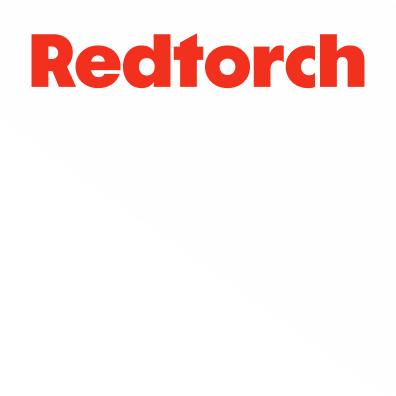Some Rights Holders Need to Revisit the Fundamentals of Marketing…
Global revenue from OTT content is predicted to reach US $64.8bn in 2021. But how much of this revenue will sports rights holders see?
Commercial rights holders such as the NBA and the NFL have already established OTT services, but in 2017 there has been a number of launches from rights holders such as the EFL, FINA, and WTA. I expect this trend to continue.
Sustainable revenue via OTT is a fantastic opportunity for sport, but I feel some rights holders need to revisit marketing fundamentals to fully realise the exciting opportunities this strategy provides. Previously, rights holders have relied on traditional broadcasters for their marketing dollars and audience reach, but the OTT world is far more competitive when it comes to audience acquisition and growth.
For the purpose of this topline blog, I’m going to revisit the 6 P’s of marketing within the context of OTT.
PEOPLE
The fans of your competition, not sport, are distributed across the world, but defining the level of ‘fandom’ is a science. How well do you know your fans and target OTT audience? It’s important to consider two basic socio-cultural data points when thinking about your audience in the context of OTT:
- How much disposal income an average person has in a given territory
- How much time people spend watching TV
Apply these two simple variables to your research and you will see audience dynamics differ greatly across the world.
Disposal income will have a huge impact on the propensity to purchase:
Time spent watching is an essential variable to consider, as it’s the single biggest prize for competing live sports. On average, an adult spends 3.3 hours per day watching TV in the United States. An average sports broadcast for that market lasts over 2 hours.
Dynamic, geo-targeted pricing and a clear understanding of your target audiences is crucial. A one-size-fits-all strategy won’t work for an international OTT offering.
PRODUCT
Remember the product is not your sport, but the sport’s competition. How this competition is experienced in the digital space will go a long way in determining its success. Strong narratives delivered with a digital-first approach is crucial. Simply taking a TV product, moving it onto digital and hoping for the best will not work.
Engaging people on an emotional level takes a significant amount of time, so the quality of narrative will determine how many people in any given market will want to watch your competition, and continue to do so.
Sports take note: in a recent survey 31,000 people were asked what type of content they enjoy watching. The results weren’t pretty:
Young people also expressed less enthusiasm for sport than other age groups:
The OTT platforms offering sports have room to grow, but they need to differentiate from the competition. This competition comes in all shapes and sizes, including movies and TV shows – two things in which people are more than willing to invest their time and money.
If personalisation and exclusive, premium content is what people pay for, sport needs to satisfy this demand. Localisation of content is essential to making the product work in the long term. Wimbledon’s new localisation approach is a great example of this.
PRICE
Supply and demand is the dominant economic model of price determination. Without demand for your product, you can’t command high prices.
Setting the price for your OTT offering is a tricky business. Enormous television revenues are distracting, and sports will do well to ignore them and perform a cross-genre price comparison to get the right launch price. Don’t just stick with sport, take into account the entertainment OTT market – Spotify, Amazon Prime, Netflix etc.
*ifollow is an average monthly amount of £110 over the football season
Understanding your audience is essential, as competition for audiences intensifies when other genres are introduced into the OTT mix. Competitive pricing across the whole OTT market is a wise move – rights holders need to do their research. A recent world championships was at least 60% cheaper to watch on the Eurosport Player, rather than on their native platform. Is this effective pricing?
When it comes to pricing, rights holders understandably want to maintain current revenue streams similar to their TV revenues, but it’s a different market. There are other ways to monetise your audience, and these should be explored to make up any potential loss, rather over-pricing the OTT platform.
PLACE
For an OTT package to work effectively, its audience must have access to a sufficient broadband speed. This includes on mobile too, where more and more people are choosing to watch content from. 3G and 4G networks will make a big impact on audience acquisition and retention. At present global average fixed line broadband speed is 27.5Mbps (Megabits per second) and the prediction is that this will rise to 53Mbps by 2021. This is great news for OTT providers, but local broadband speeds still need to be factored in to global strategies.
PROMOTION
TV is still one of sport’s most effective mediums for local promotion, but this is slowly being eroded. In the world of OTT, cross-genre competition has to be factored into the promotion strategy, as the audience now has an abundance of choices which could affect the delivery of your platform.
I feel the biggest challenges when promoting an OTT platform is the majority of rights holders are not set up for e-commerce. The basic structures are not in place – from dynamic CRM systems to in-house marketing teams with experience in delivering this new digital offering.
But rights holders with a strong online brand presence and existing routes to market have a great opportunity to acquire and grow their OTT audience. Unfortunately, there a number of rights holders that seem to be focused only on integrating new technology with little regard for the content package or audience.
Remember, audience acquisition is an expensive business. Everyone talks about being the next Netflix of sports, but fail to remember Netflix have invested huge sums of money to acquire their audience. For example, in 2017 Netflix is predicted to spend over $1 billion dollars on marketing. If the biggest player in OTT is spending this amount on marketing, then emerging properties in this space need to give this area the attention it needs.
Regardless of the OTT giants spending alien sums of money on their projects, there is tremendous opportunity in this space for sports who get it right. We’ve been working successfully with rights holders such as Eurovision, APP World Tour and FISE to grow their OTT platforms.
First and foremost, these projects required a deep understanding of their audience and granular geo-targeted marketing to successfully acquire and retain viewers.
For some smaller rights holders, there is still an audience out there. But expectations must be managed, as the amount of resource you apply to your OTT project will greatly determine its outcome.
PERFORMANCE
For an OTT platform, successful performance is measured by a high average view time, minimal churn rate and the ability to attract new customers, which will result in sustained investment in the sports competition over time.
Rights holders like Wimbledon, The Masters, etc. are perfect examples of staying focused and authentic whilst constantly innovating and creating compelling narratives which put fans at the heart of everything.
Sport has a tremendous opportunity to realise the potential of OTT, but the 6 P’s have to be at the heart of everything. If these factors are properly considered at the conception stage of your OTT platform it will have a much greater chance of being successful.
Before embarking upon your OTT journey, I’d encourage all rights holders to ask their team one simple question: why would someone pay to watch our sport?
If you’re currently developing your OTT platform, we can help at any stage. Get in touch to learn more.





